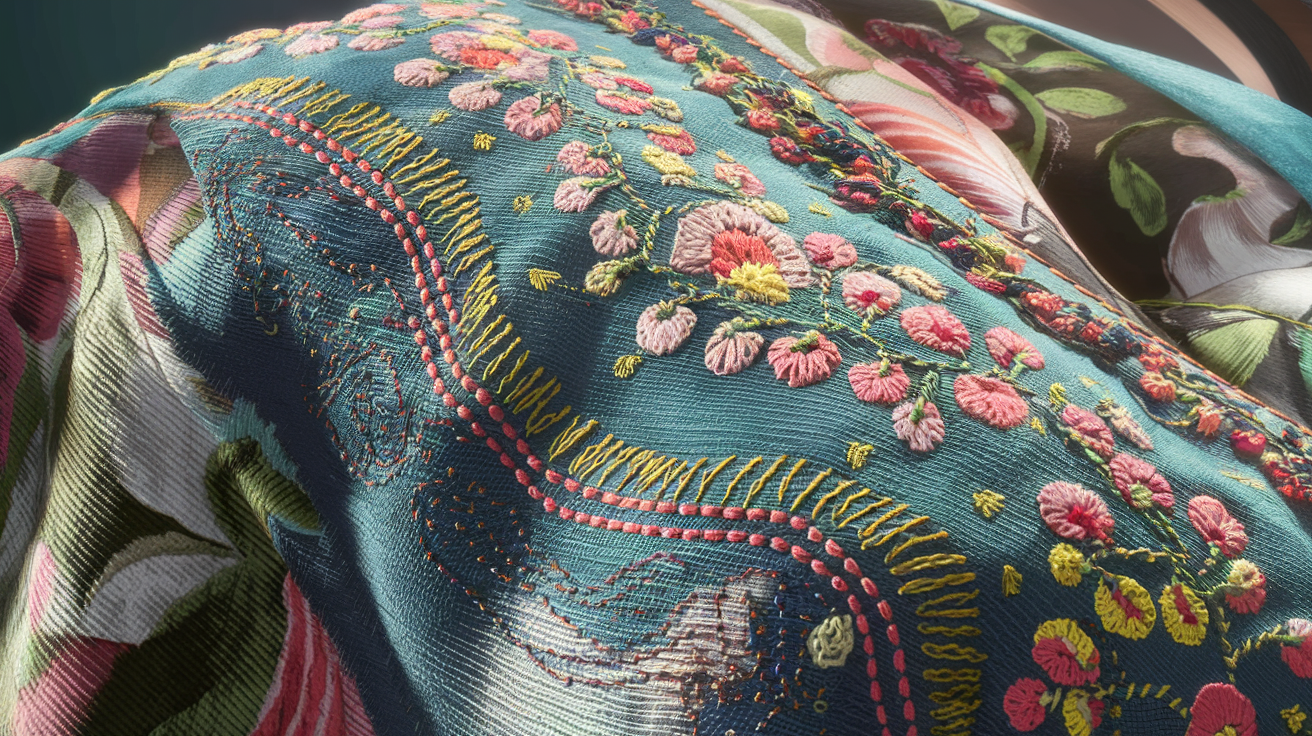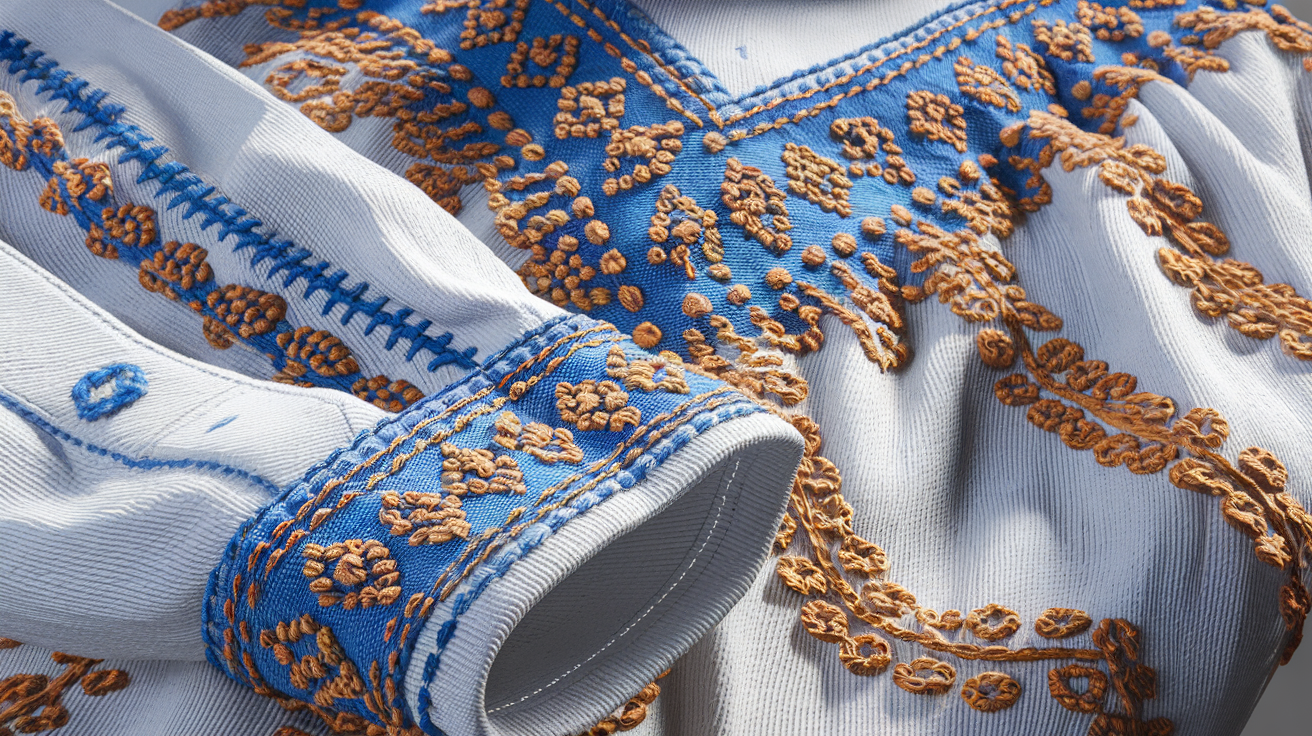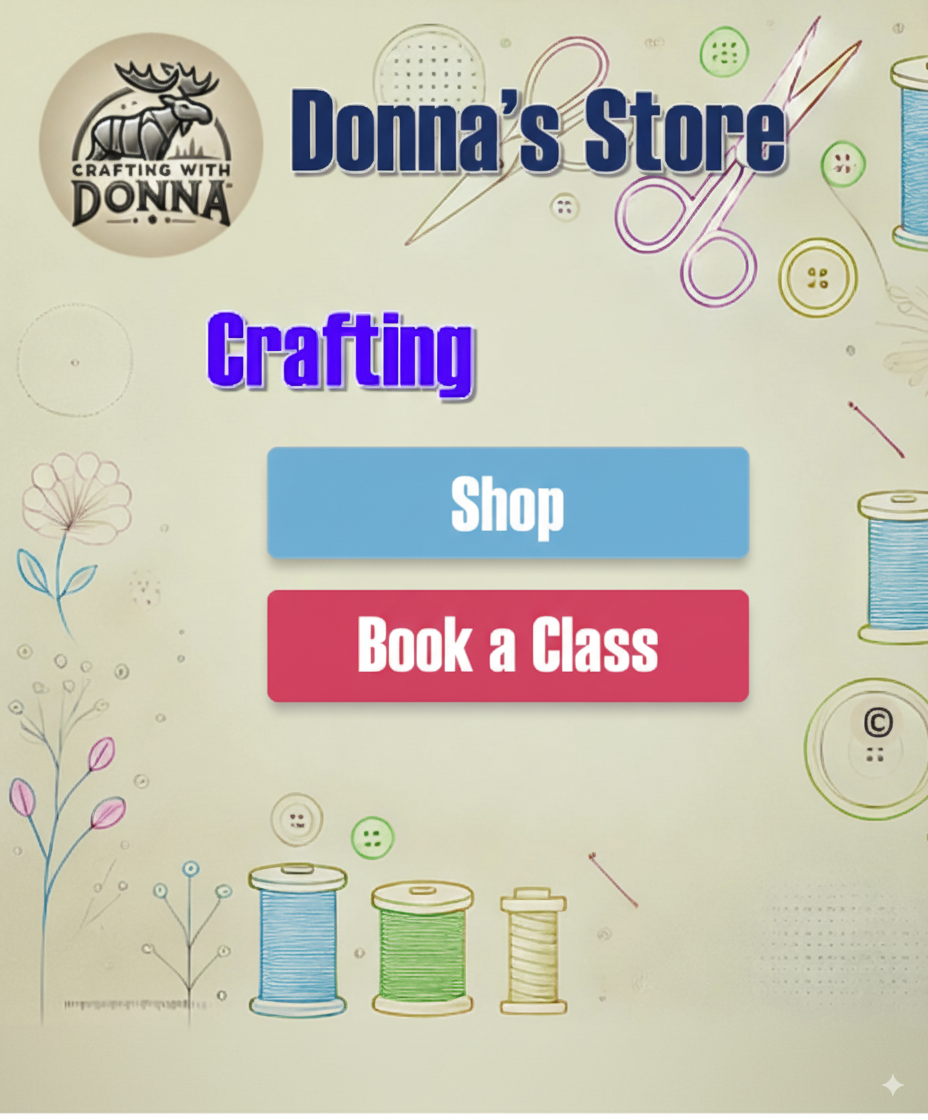How To Use Printable Cross Stitch Sheets For Clothing Embellishment

Printable cross stitch sheets offer a contemporary and approachable method for adding bespoke embroidery to any clothing item, transforming it into unique wearable art. This textile embellishment technique allows crafters to print custom embroidery designs directly onto special stitchable sheets, which can then be applied to garments like shirts, denim jackets, tote bags, and more, imbuing them with a personalized, hand-stitched aesthetic.
Embroidery on clothing has never been easier.
Start by printing your selected cross stitch patterns onto either a water-soluble stabilizer or a waste canvas sheet, then carefully trim the sheet while maintaining a small border around the design for simplified placement.
Secure the printed sheet onto your garment, ensuring it lies flat and is correctly aligned, particularly on fabrics with stretch. Thread your needle with vibrant DMC embroidery floss and proceed to stitch through both the sheet and the underlying fabric, meticulously following the printed guide.
Once your decorative stitches are complete, either immerse the garment in warm water to dissolve the soluble sheet or gently pull away the threads of the waste canvas. This DIY fashion approach breathes new life into plain or older garments, making each piece distinctive, and introducing a method that is accessible to both novices and experienced crafters.
It seamlessly sets the stage for selecting your perfect patterns.
Choosing Your Perfect Cross Stitch Patterns
Selecting the right cross stitch patterns when embarking on embroidery on clothing significantly enhances your project, especially when considering your skill level and the garment’s material.
For those new to needlecrafts, initiating with patterns featuring lower stitch counts, such as larger and more prominent designs, proves beneficial as they demand less intricate counting and simplify the pattern transfer process.
Printable cross stitch sheets are exceptionally well-suited for simpler motifs that effectively highlight the richness of your chosen thread colors. Curate a compatible DMC embroidery floss palette, or venture into using metallic and variegated threads to achieve truly creative embellishments.
Numerous online platforms provide a wealth of free resources for printable craft supplies and downloadable patterns, many of which are perfectly formatted for direct application with stitch guides for fabric. By selecting appropriate cross stitch patterns, the task of customizing garments with distinctive, decorative stitches becomes both an enjoyable and inspiring endeavor.
This approach allows for effortless fashion customization and adds unique flair to your personalized apparel.

Printing Your Stitchable Sheets for Fabric
Printable cross stitch sheets provide an accessible method for textile embellishment, uniquely bridging digital design with needlecraft. Fabric printing quality relies on printer settings; select Best or High for optimal ink saturation, ensuring your cross stitch patterns are clear for precise stitch guides for fabric.
When preparing stitchable sheets like watersoluble stabilizer or waste canvas, confirm compatibility with your fabric type for successful DIY fashion.
Experiment with different paper weights for the best handling and crisp results, preserving your crafting supplies and ensuring your printable craft supplies perform well on any fabric art projects.
Custom embroidery on garments is simplified with these printable sheets, reducing traditional pattern transfer complexities.
These stitchable sheets adhere to most fabrics, from shirts and denim to linen and canvas, making them versatile for various apparel customization techniques. For the best outcomes, especially on textured or stretchy materials, choose patterns with clean lines and simpler motifs.
Hundreds of free cross stitch patterns are available online to personalize your projects, transforming plain or older clothes into unique pieces. The dissolvable nature of many printable sheets means no residue remains after rinsing, offering a clean, professional finish.
Embellishing clothes with embroidery helps reduce textile waste by refreshing worn or plain garments, promoting a more sustainable approach to personalization.
Adhering Sheets for Accurate Pattern Transfer
Achieving accurate pattern transfer hinges on proper adhesion, preventing shifts during your embroidery on clothing.
Secure stitchable sheets using clear tape or a light fabric spray adhesive; always test adhesives on a fabric scrap first to avoid residue or color transfer.
This step is key for successful custom textile printing and ensures your needlecraft results are clean.
Embroidery techniques demand a smooth surface; stretch your garment carefully before applying the sheet. This preparation ensures wrinkle-free application, vital for consistent pattern placement on your personalized apparel.
For stretch fabrics, avoid stretching the material while stitching to prevent puckering, maintaining the integrity of your custom clothing. A sharp embroidery needle and strong, colorfast thread, such as DMC embroidery floss, ensure durability through wash and wear.
Mixing thread colors can create shading for eye-catching designs, enhancing your wearable art.
Always test the removal of the printable sheet on a fabric scrap to check for colorfastness and sheet residue before beginning your main project.
When stitching is finished, remove the sheet—soluble sheets dissolve in warm water, while waste canvas threads can be removed individually.
Allow the garment to dry fully, then iron if needed to set the stitches. Use this technique to patch worn areas or cover stains creatively, offering a stylish way to upgrade any wardrobe.
This method is accessible for beginners and seasoned crafters alike, perfect for creating fabric patches or adding decorative stitches. Explore craft inspiration for sewing embellishment techniques to create unique clothing accessories or personalized gifts.
- Printable cross stitch sheets offer a method for textile embellishment by bridging digital design with needlecraft.
- These stitchable sheets adhere to various fabrics, including shirts, denim, linen, and canvas, making them versatile for apparel customization.
- Soluble sheets dissolve in warm water, leaving no residue, while waste canvas threads can be removed individually for a clean finish.
- Using printable sheets for custom embroidery simplifies traditional pattern transfer complexities and promotes sustainable practices by refreshing garments.
Mastering Your Embroidery on Clothing
Embroidery on clothing transforms everyday items into unique wearable art, building on established textile embellishment principles. Printable cross stitch sheets offer a modern, beginner-friendly method for applying intricate designs to garments.
These sheets allow crafters to print any cross stitch pattern, simplify pattern transfer onto various materials like shirts, jackets, and jeans, and then stitch directly onto the fabric for a distinct, hand-stitched appearance.
Selecting the right needle for your specific garment material ensures precise stitch entry and helps prevent frustrating fabric snags, contributing to a polished finish.
The key to smooth lines and professional results lies in maintaining even, gentle tension with your DMC embroidery floss, a core aspect of effective needlecraft.
Finishing your embroidery cleanly on the inside of the garment enhances its longevity and professional look. For a neat finish, trim excess threads close to the stitch line.
On delicate fabrics, consider adding a light fusible interfacing to the inside for added support. A practical tip for achieving the best results is to pre-wash garments before embroidering; this accounts for any potential shrinkage, guaranteeing your design remains crisp and perfectly positioned throughout the life of the garment.
Craft inspiration for apparel upgrades and creative crafting is abundant with this technique.
Design Transfer and Stitching Basics
Stitchable sheets simplify the process of applying your chosen cross stitch patterns.
Print your desired designs onto these specialized sheets, trim them to size with a margin around the design for easier placement, and then adhere or pin them onto the garment where you wish the embroidery to appear.
Stitch through both the sheet and fabric, using the printed pattern as your clear guide for accurate placement and design execution. Experiment with embroidery floss colors for striking or subtle effects that match your garment and personal style.
For stretchy fabrics, like those found in T-shirts, avoid stretching the material excessively while stitching to prevent unwanted puckering, ensuring smooth execution of your decorative stitches.
Post-Stitching Care and Refinement
After completing your stitch artistry, the correct removal of the stabilizer is essential for a flawless final appearance. Water-soluble stabilizer is typically the easiest for beginners; simply rinse your finished embroidery under lukewarm water until the entire sheet dissolves, leaving behind crisp, residue-free stitches.
Should you use waste canvas, gently snip and extract each grid thread with sharp embroidery scissors or tweezers, exercising care to avoid disturbing your carefully placed stitches.
This intricate pattern transfer step is crucial for embellishing garments with neat contours and preventing stray fibers from marring the interior of your work, contributing to a polished outcome for your DIY fashion projects.
Expert tip: Always test the removal method for your chosen stabilizer on a small fabric scrap before committing to your main project.
This proactive step helps ensure the fabric’s colorfastness and that no unwanted residue remains after rinsing, guaranteeing pristine results for every textile art project.
Removing Stabilizer after Stitching
Achieving a polished finish on your embroidered garments relies heavily on the correct removal of stabilizing materials.
Understanding the various types of stabilizer and their specific removal methods is key to preserving your stitch artistry and ensuring a clean, professional outcome for your personalized apparel.
Water-soluble stabilizers are generally the most user-friendly, dissolving easily in water without leaving any residue behind. Simply rinse your finished embroidery under cool or lukewarm water until the stabilizer completely disappears, leaving your stitches crisp and clear.
This method is a favorite for its simplicity and effectiveness in fabric customization.
For tear-away stabilizer, a more hands-on approach is required. Carefully snip away the excess stabilizer around your design using sharp embroidery scissors.
Taking your time to avoid snagging or cutting the stitches is paramount.
A useful tip for this process is to utilize fine-tipped tweezers for the precise removal of any small stabilizer pieces, ensuring no part of the stabilizer remains to detract from your wearable art.
Expert tip: Use tweezers for the precise removal of small stabilizer pieces, particularly around intricate stitch details.
This attention to detail prevents snagging stitches and ensures a clean edge for your embroidery, contributing to the overall quality of your custom clothing.
By carefully managing stabilizer removal, you create clean, durable results for every DIY apparel project, enhancing your craft inspiration and overall garment personalization.
| Embroidery Technique | Key Benefit | Recommended Material |
|---|---|---|
| Printable cross stitch sheets | Simplifies pattern transfer and provides a hand-stitched look | Embroidery floss |
| Stabilizer removal (water-soluble) | Ensures crisp, residue-free stitches for a polished finish | Water-soluble stabilizer |
| Stabilizer removal (tear-away) | Requires careful snipping for clean edges and stitch preservation | Tear-away stabilizer, fine-tipped tweezers |
| Pre-washing garments | Prevents shrinkage and ensures design integrity | Various garment materials (shirts, jackets, jeans) |
Caring for Your Embellished Garments
Maintaining your creations preserves their beauty, and following specific care instructions for threads and fabrics is essential for lasting appeal. Hand washing is often recommended for heavily embellished items, utilizing cool or lukewarm water with a mild detergent to protect the delicate needlework and fabric.
Avoid harsh detergents and high heat when drying; instead, air dry flat to preserve the garment’s shape and the integrity of the stitches.
Always iron embroidered items on the reverse side, using a pressing cloth to prevent direct heat from damaging the threads.
This mindful approach ensures your textile embellishment remains vibrant, extending the life of your DIY fashion pieces and keeping your custom clothing looking its best.
Creative Embroidery Techniques for Apparel
Expand upon basic stitching with advanced methods to create striking visual effects and tactile richness on your apparel. Explore techniques like satin stitch, French knots, and couching for added dimension and depth in your designs.
Learning to combine different stitches within a single design can result in a richer, more complex look, elevating your wearable art. Consider using metallic or variegated threads for unique accents that catch the light and add a special flair to your personalized apparel.
These methods, alongside using materials like waste canvas or watersoluble stabilizer, allow crafters to achieve intricate motifs on virtually any fabric, transforming ordinary clothing into unique expressions of stitch artistry and personal style.
Key Takeaways for Textile Embellishment
- Hand washing with cool or lukewarm water and mild detergent is recommended for heavily embellished items to protect delicate needlework.
- Air drying flat is advised to maintain the garment’s shape and the integrity of the stitches, avoiding harsh detergents and high heat.
- Ironing embroidered items on the reverse side with a pressing cloth prevents direct heat damage to threads.
- Advanced techniques like satin stitch, French knots, and couching can add dimension and depth to apparel designs.
Transforming Apparel with Textile Embellishment
Personalizing Style with Textile Embellishment
Unleashing creative energy through textile embellishment allows every maker to transform ordinary garments into personalized apparel that truly reflects individual taste. Mastering techniques with embroidery on clothing gives you the freedom to choose design placement and scale for undeniable impact—consider sketching custom embroidery concepts directly on your garment to visualize before you begin.
By employing printable cross stitch sheets and experimenting with strategic pattern transfer, your DIY fashion project becomes wearable art.
Try bold placement across pockets or subtle motifs near cuffs, ensuring that every stitch aligns with your vision for personalized style and stand-out, creative embellishments.
Printable cross stitch sheets offer a modern, beginner-friendly way to embellish clothing with custom embroidery.
These water-soluble or waste canvas sheets let crafters print any cross stitch pattern, attach it to shirts, jackets, jeans, tote bags, and more, and stitch directly onto the garment for a creative, hand-stitched look. Print chosen cross stitch patterns onto special printable sheets designed for use with fabric.
Trim the printed sheet to size, leaving a margin around the design for easier placement. Adhere or pin the sheet onto the garment where you want the design.
Stitch through both the sheet and fabric, following the printed pattern as a guide.
Select embroidery floss colors that suit your garment and design for striking or subtle effects.
For stretch fabrics (like T-shirts), avoid stretching the material while stitching to prevent puckering.
When embroidery is finished, remove the sheet—soluble sheets dissolve in warm water, while waste canvas threads can be removed individually. Allow the garment to dry fully, then iron if needed to set the stitches.
Utilize this technique to patch worn areas or cover stains creatively. Refresh plain or older clothes, making each piece unique, and the method is accessible for beginners and seasoned crafters alike.
Printable cross stitch sheets eliminate the need for complex pattern marking, speeding up DIY embroidery projects.
Cross stitch patterns downloaded online offer a wealth of inspiration for your next project, empowering you to truly personalize your style.
These printable sheets adhere to most fabrics, working seamlessly with shirts, denim, linen, canvas, and even knitwear.
Choosing patterns with clean lines and simple motifs yields the best results, especially on textured or stretchy garments.
The dissolvable nature of many printable sheets means no residue is left behind after rinsing, creating a clean, professional finish. Embellishing clothes with embroidery helps reduce textile waste by refreshing worn or plain garments, contributing to a more sustainable wardrobe.
A sharp embroidery needle and strong, colorfast thread like DMC embroidery floss ensure durability through wash and wear.
Mix thread colors to achieve shading and eye-catching designs, elevating your apparel upgrades. Always test the removal of the printable sheet on a fabric scrap to check for colorfastness and sheet residue before starting your main project.
Personalized embroidery with printable sheets provides an eco-friendly, stylish way to upgrade any wardrobe, showcasing your unique craft inspiration and stitch artistry.
Personalized embroidery with printable sheets provides an eco-friendly, stylish way to upgrade any wardrobe.
Experimenting with textile crafts leads to incredibly unique wearables, transforming everyday items into wearable art.
Consider using waste canvas for a different tactile experience, offering a stable foundation for intricate designs on various fabrics.
This method of fashion customization allows for the creation of distinctive fabric patches or detailed embellishments that add personality to any garment. Explore different embroidery techniques to achieve varied textures and visual effects, turning simple sewing into a form of fabric art projects.
The application of watersoluble stabilizer provides a temporary guide for stitches, disappearing cleanly when rinsed, which is perfect for delicate fabrics or complex designs.
This allows for precise pattern transfer and meticulous stitching, resulting in highly detailed custom
- Printable cross stitch sheets are a beginner-friendly method for embellishing clothing with custom embroidery, allowing crafters to print and stitch directly onto garments.
- These sheets, often water-soluble or waste canvas, adhere to various fabrics like shirts, jackets, jeans, and tote bags, enabling a hand-stitched look.
- Embellishing clothes with embroidery using these techniques helps reduce textile waste by refreshing worn or plain garments, contributing to a more sustainable wardrobe.
- Using sharp needles and colorfast threads like DMC embroidery floss ensures the durability of the personalized embroidery through washing and wear.




